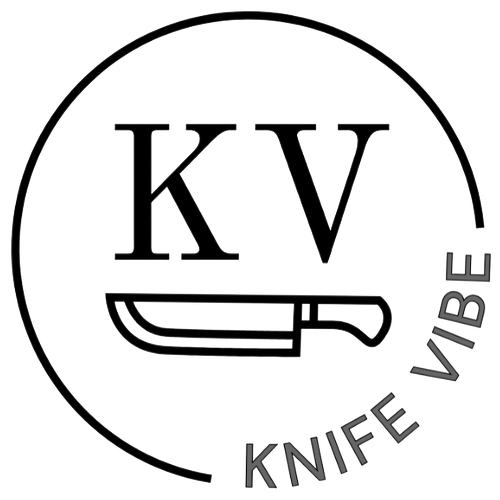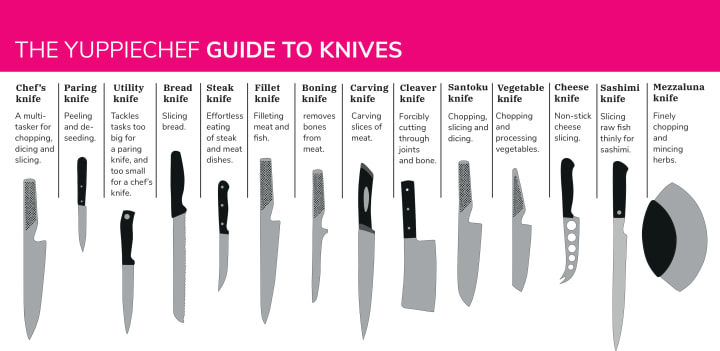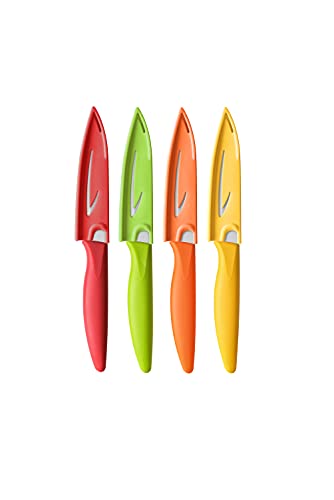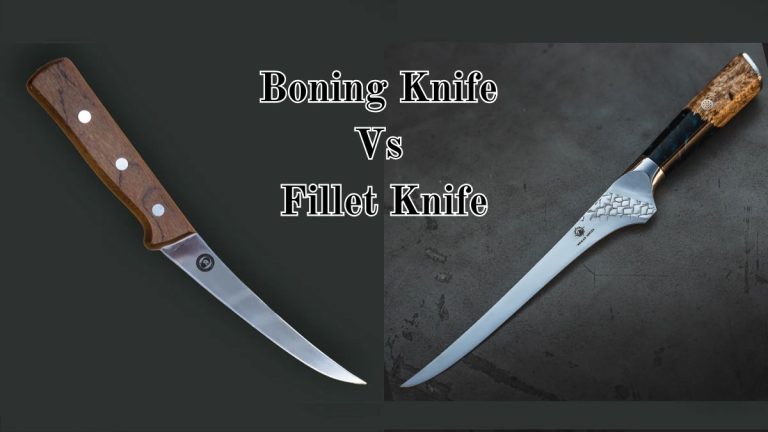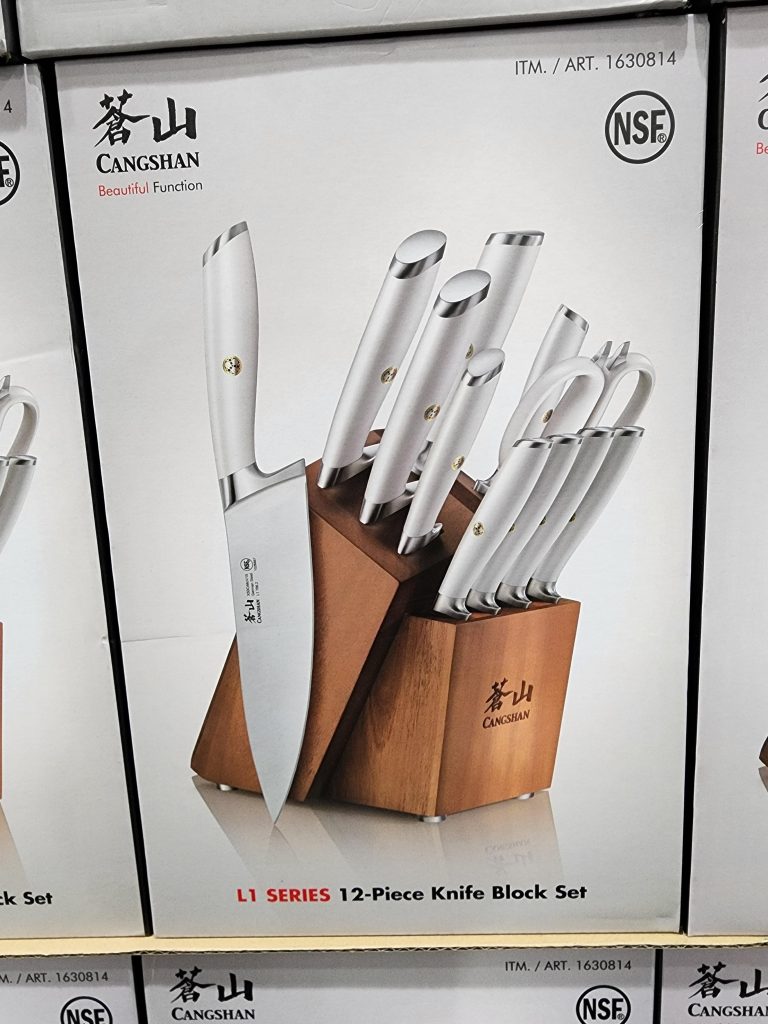Carving Knife Vs Utility Knife: Which One is Essential for Your Kitchen?
Choosing between a carving knife and a utility knife can be tricky. Both knives serve different purposes in the kitchen.
A carving knife is designed for slicing thin cuts of meat. Its long, narrow blade ensures precision. On the other hand, a utility knife is versatile and can handle various tasks. It’s shorter and broader, making it ideal for cutting fruits, vegetables, and smaller meats.
Understanding these differences can help you decide which knife suits your needs best. Whether you’re preparing a feast or just making a quick meal, knowing the right tool can make your cooking experience smoother and more enjoyable. Let’s dive into the specifics and see which knife fits your kitchen tasks better.
Carving Knife Features
In the world of kitchen tools, understanding the unique features of a carving knife can enhance your cooking experience. This section will delve into the specific characteristics that make a carving knife a must-have in your kitchen arsenal.
Blade Design
The blade design of a carving knife is distinct. It typically has a long, narrow blade that tapers to a sharp point. This design allows for precise cuts. The blade is often rigid, offering stability and control.
- Long and narrow for precision
- Sharp point for detailed work
- Rigid for stability
Common Uses
Carving knives are ideal for slicing large cuts of meat. They excel at cutting turkey, roast, and ham. Their design makes them perfect for achieving thin, even slices. This makes them a go-to tool for holiday meals and special occasions.
- Slicing turkey
- Cutting roast beef
- Carving ham
Pros And Cons
| Pros | Cons |
|---|---|
| Precise cuts | Not versatile |
| Ideal for large meats | Requires maintenance |
| Stable and controlled | Specialty tool |
The carving knife offers precision and control. Yet, it is not a versatile tool. It requires proper maintenance. Despite these cons, it remains an essential tool for specific tasks.
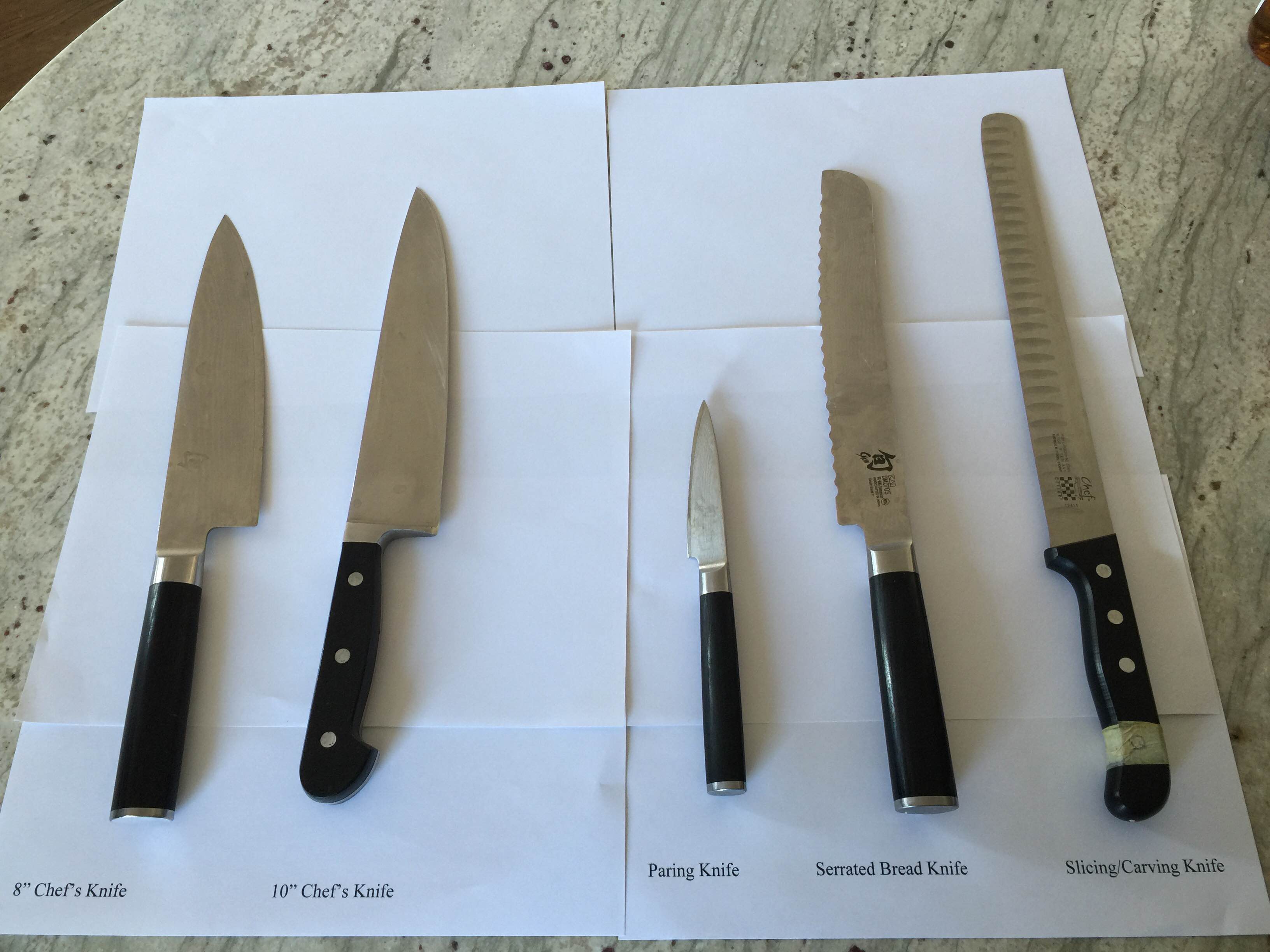
Credit: www.thechoppingblock.com
Utility Knife Features
A utility knife is a versatile tool in the kitchen. It bridges the gap between a chef’s knife and a paring knife. It offers convenience and precision for various tasks. Here, we delve into the features of a utility knife.
Blade Design
The blade design of a utility knife is unique. It usually measures between 4 to 7 inches. The blade is narrower than a chef’s knife. This allows for detailed work. It can be straight or slightly curved. Both designs offer precision.
The edge of the blade is either smooth or serrated. A smooth edge is ideal for clean cuts. A serrated edge is perfect for slicing through tough surfaces. The tip of the blade is pointed. This aids in piercing and detailed cuts.
Common Uses
The common uses of a utility knife are diverse. It handles tasks that are too small for a chef’s knife. It also performs tasks that are too big for a paring knife. Here are some typical uses:
- Slicing fruits and vegetables
- Trimming and slicing meats
- Peeling produce
- Cutting sandwiches
This knife is essential for any kitchen. It offers flexibility and efficiency.
Pros And Cons
Like any tool, a utility knife has pros and cons. Understanding these helps in making an informed choice.
| Pros | Cons |
|---|---|
| Versatile for various tasks | Not ideal for large cuts |
| Lightweight and easy to handle | Limited blade length |
| Perfect for precision work | May not replace specialized knives |
A utility knife is a handy addition to any kitchen. It bridges the gap between different knife sizes and types.
Comparative Analysis
Choosing between a carving knife and a utility knife can be challenging. Each has distinct features and uses. In this section, we will compare their blade length and sharpness, and their versatility and flexibility. This analysis will help you decide which knife suits your needs better.
Blade Length And Sharpness
A carving knife typically has a longer blade. The length ranges from 8 to 15 inches. This makes it perfect for slicing large cuts of meat. The blade is thin and sharp, ensuring clean and precise cuts. A utility knife, on the other hand, has a shorter blade. The length is usually between 4 to 7 inches. This size makes it versatile for various kitchen tasks. While the blade is sharp, it may not match the precision of a carving knife for large cuts.
Versatility And Flexibility
A utility knife shines in its versatility. It can handle many tasks like slicing fruits, vegetables, and smaller cuts of meat. Its shorter blade offers better control and flexibility. This makes it a go-to tool for everyday cooking. A carving knife is more specialized. It’s ideal for slicing roasts, poultry, and large fish. Though less versatile, it excels in its specific role. The long, sharp blade ensures smooth, even slices.
Choosing Based On Cooking Style
Selecting the right knife depends on your cooking style. Use a carving knife for slicing meats. Choose a utility knife for versatile kitchen tasks.
Choosing the right knife depends on your cooking style. Some knives work better for specific tasks. Here, we will discuss the best options for different cooking styles.For Meat Lovers
If you love cooking meat, the carving knife is essential. It has a long, thin blade, making it perfect for slicing through large cuts. This knife offers precision and clean cuts. It is ideal for roasts, poultry, and ham. The carving knife also helps in maintaining the meat’s texture. It minimizes tearing and keeps the juices inside. This makes your meat dishes more flavorful.For Everyday Cooking
For everyday cooking, the utility knife is a versatile choice. It is smaller and more maneuverable than a carving knife. You can use it for a variety of tasks. This includes cutting fruits, vegetables, and smaller cuts of meat. The utility knife is handy for quick and easy preparations. It is perfect for sandwiches, salads, and daily meal prep. Its smaller size makes it easy to control. This makes it a practical tool in any kitchen. “`Care And Maintenance
Proper care and maintenance of your knives can extend their lifespan. It also ensures they remain effective. Whether you own a carving knife or a utility knife, taking care of them is crucial. Let’s explore some essential tips on sharpening and storage.
Sharpening Tips
Keeping your knives sharp is vital for safe and effective use. Here are some tips:
- Use a whetstone for the best sharpening results. It provides a finer edge.
- Maintain a consistent angle while sharpening. Typically, a 20-degree angle works well.
- For a carving knife, focus on longer, consistent strokes. This maintains the blade’s length.
- With a utility knife, short, precise strokes are effective.
- Regularly honing your knives keeps them sharp. It aligns the blade’s edge.
Proper Storage
Storing your knives correctly prevents damage and ensures safety. Here are some storage tips:
- Use a knife block or a magnetic strip. These options keep blades secure and accessible.
- Avoid storing knives in drawers. They can get damaged or dull.
- For utility knives, consider a protective sheath. It provides additional safety.
- Carving knives benefit from a dedicated slot in a knife block. This protects their long blades.
- Ensure knives are completely dry before storing. Moisture can cause rust and corrosion.
By following these care and maintenance tips, you can keep your carving and utility knives in top condition. Proper sharpening and storage are essential practices for knife longevity and performance.
Chef’s Opinions
Carving knives and utility knives are staples in every kitchen. But what do professional chefs think about them? Their opinions can help you decide which knife to use and when.
Professional Recommendations
Chefs have strong opinions on knives. Many prefer a carving knife for slicing meats. Its long blade ensures clean cuts. It also reduces the risk of tearing the meat.
On the other hand, a utility knife is more versatile. It can handle various tasks. Chefs recommend it for cutting fruits, vegetables, and smaller meats.
| Knife Type | Best Use |
|---|---|
| Carving Knife | Slicing large meats |
| Utility Knife | Cutting fruits, vegetables, and smaller meats |
Personal Preferences
Personal preferences play a huge role. Some chefs love the precision of a carving knife. They enjoy its ability to make thin, even slices. Others prefer the flexibility of a utility knife. They appreciate its ability to handle various tasks.
Here are some preferences:
- Carving Knife: Ideal for holiday roasts and large gatherings.
- Utility Knife: Perfect for everyday cooking tasks.
Ultimately, the best knife depends on the chef’s style. Some prefer the specialized nature of a carving knife. Others value the utility knife’s versatility.
Final Thoughts
Choosing the right knife can be a bit confusing. Both carving knives and utility knives have their unique strengths. Understanding these differences helps in making an informed choice for your kitchen needs.
Making The Right Choice
Consider the tasks you perform in the kitchen. Carving knives excel at slicing meats and large fruits. They offer precision and clean cuts. Utility knives, on the other hand, are versatile. They handle a variety of small to medium tasks.
Think about your cooking habits. Do you often prepare roasts or large meals? A carving knife might be more beneficial. If you need an all-purpose tool, a utility knife could be the better option. Both knives serve important roles. The right choice depends on your specific needs.
Balancing Functionality And Budget
Budget plays a crucial role in decision-making. Carving knives can be more expensive. They are specialized tools with specific uses. Utility knives are generally more affordable. They offer flexibility without breaking the bank.
Invest in quality. A good knife lasts longer and performs better. Look for trusted brands and read reviews. Balancing functionality and budget ensures you get the best value for your money.
In summary, both knives have their place. Choose based on your cooking habits and budget. This way, you will have the right tool for the right job.
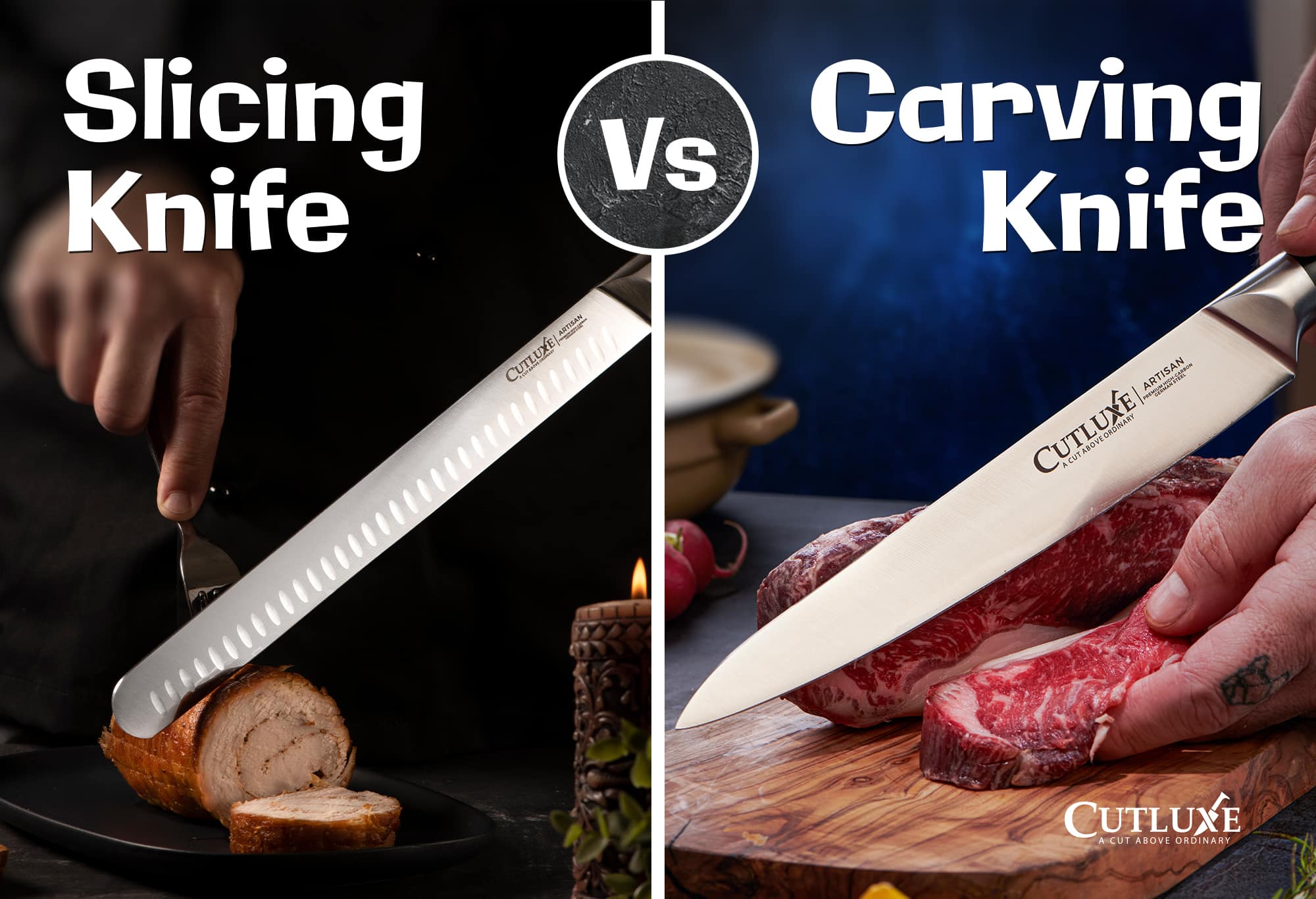
Credit: www.cutluxe.com

Credit: finoak.com
Frequently Asked Questions
What Is A Carving Knife Used For?
A carving knife is used for slicing meat, poultry, and fish. Its long, thin blade ensures clean, precise cuts.
Can A Utility Knife Cut Meat?
Yes, a utility knife can cut meat. However, it’s better suited for smaller tasks like trimming and slicing vegetables.
What Is The Difference Between A Carving Knife And A Utility Knife?
A carving knife has a long, thin blade for slicing meat. A utility knife has a shorter blade for versatile tasks.
Which Knife Is Better For Vegetables?
A utility knife is better for vegetables. Its shorter blade allows for more control and precision in cutting.
Conclusion
Choosing the right knife depends on your needs. Carving knives excel at slicing meat. Utility knives handle various kitchen tasks. Both have unique strengths. Consider your cooking habits. Think about your most common tasks. A balanced kitchen includes both knives.
This allows for versatility. Invest in quality knives for better performance. Happy cooking!
